.png.transform/rendition-xs/image_image%20(1).png)
Jamón de Trevélez PGI
Cured hams (hind extremities) from white pigs, cross breeds of the Landrace, Large White and Duroc-Jersey breeds, with a total production period of 17, 20 and 23 months depending on weight
Tasting notes
It is characterized by its delicate, lightly salted flavor, as well as its smooth aroma, characteristic of cured products.
Other notes
Round in shape and weighing between 7.3 and 9 kilos (16.1 – 19.8 lbs), it retains both its rind and its hoof. When sliced it is red in color, slightly pale, fading gradually from the external part towards the middle, with partial fat infiltration in the muscle tissue. The fat is unctuous, shiny, and white-yellow in color. The maximum percentage of sodium chloride should be 5%.
Production / Processing method
There are three types of seals that will identify each piece in relacion to its fresh weight, according to the following categories: blue seal for hams whose weight is between 11.3 kg to 12.3 kg (24.9 - 27 lbs), red seal for hams whose weight is between 12.3 to 13.5 kg. (27 – 29.7 lbs) and black seal for hams whose weight is greater than 13.5 kg (29.7 lbs).The hams hind extremities must come from castrated pigs, with a pH of between 5.5 and 6.4 measured at the area of the semimembranosus muscle, once a period of at least 24 hours has passed from the animal's slaughter.
Its fresh weight should exceed 11.3 kg, and the pieces used must have a subcutaneous fat thickness of at least one centimeter (0.39 in) and infiltrated fat for weights under 12.3 kg (27 lbs), 1.5 cm (0.6 in) with infiltrated fat for weights between 12.3 and 13.5 kg (27 and 29.7 lbs), and 2 cm (0.8 in) with infiltrated fat for weights above 13.5 kg (29.7 lbs).Transport of the hams from the slaughterhouse to the curing areas must always be carried out in vehicles which fully comply with prevailing legislation, so that they arrive at the salting plants at a temperature of between one and four degrees centigrade (33.8 – 39.2 ºF), taken at any given point of the piece, and less than four degrees centigrade (39.2ºF) taken at 1 cm (0.4 inches) from the surface.
Salting, which is the first stage in the production process, aims to incorporate salt into the muscular tissue, thus encouraging subsequent dehydration of the ham and its perfect preservation. It is carried out by piling the hams on top of each other with marine salt in refrigerated rooms, for approximately one day per kilo (2.2 lbs) of weight. This process takes place throughout the year.
Finished salting, the pieces are washed with potable water, to remove any salt that has become adhered to the surface of the ham.The next stage, the post-salting, where the pieces are hung up to slowly, gradually dry, thus ensuring uniform distribution of the salt within the piece's muscle tissue. It is carried out at controlled relative temperature and humidity between 3 and 7 ºC (37.4 - 44.6 ºF) of temperature and between 75 and 85% of relative humidity. These temperature and humidity conditions will progressively adapt, as the process develops, to the room temperature and conditions that exist in the natural dryer rooms, depending on the time of year. This process will last for a maximum of 90 days.During the drying and maturing period, the pieces, classified according to weight, are moved to the drying warehouses, where they are hung under natural temperature and humidity conditions. This stage sees the gradual drying of the product continue, as well as the sweating process, whereby the fat is allowed to infiltrate into the muscle fibers. This stage gives the product the desired stability and allows the proteolytic phenomena responsible for its aroma and flavor.The total production period will have a minimum of 14, 17 and 20 months depending on its fresh weight. The hams must have reduced their weight throughout the entire process by a minimum of 35% or, failing that, add an additional 3 months of curing. Finally, the minimum cure is of 17 months, 20 months and 23 months depending on the weight of the piece.The definitive qualification of the hams is carried out after a final control and verification. The end product is identified with a unique alphanumeric code for each piece, placed at the beginning of the production process, with a colored seal with the name of the PGI and controlled by the Regulatory Council, which can be blue, red or black, depending on established weight categories. Likewise, the labels of the hams must feature the logo and name of the PGI, which must be clearly visible.
Geography / Relief and climate
The production area, which belongs to the region of Las Alpujarras, and with an altitude higher than 1,200 m (3,936 ft), is located in the mid-low area of the Sierra Nevada Natural Park, in the province of Granada. Above this altitude are holm oak woods of Sierra Nevada and a high number of endemic vegetable species, which are found in the Natural Park.The climate is cold, dry and with abundant snow in the winter, with slightly warm temperatures in the summer.The cierzo winds from the high peaks of the Sierra Nevada, the chiseled landscape and a constantly clean atmosphere favor the production and curing processes for these meats. This is natural area with a unique micro-climate, which allows the development of indigenous microbiological cultures that characterize Trevélez ham.
Regulatory Council
Consejo Regulador de la IGP Jamón de Trevélez
Pista de la Iglesia, 23
18417 Trevélez (Granada)
Tel: (+34) 958 858 582
info@jamondetrevelez.es
www.jamondetrevelez.es
Sources:
Natural cured, minimum time 17, 20 and 23 months, without additives
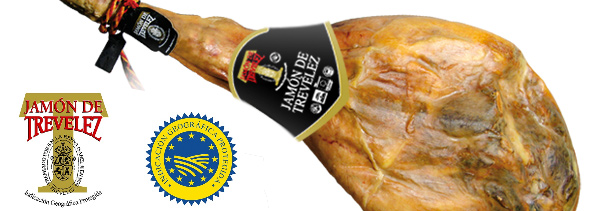
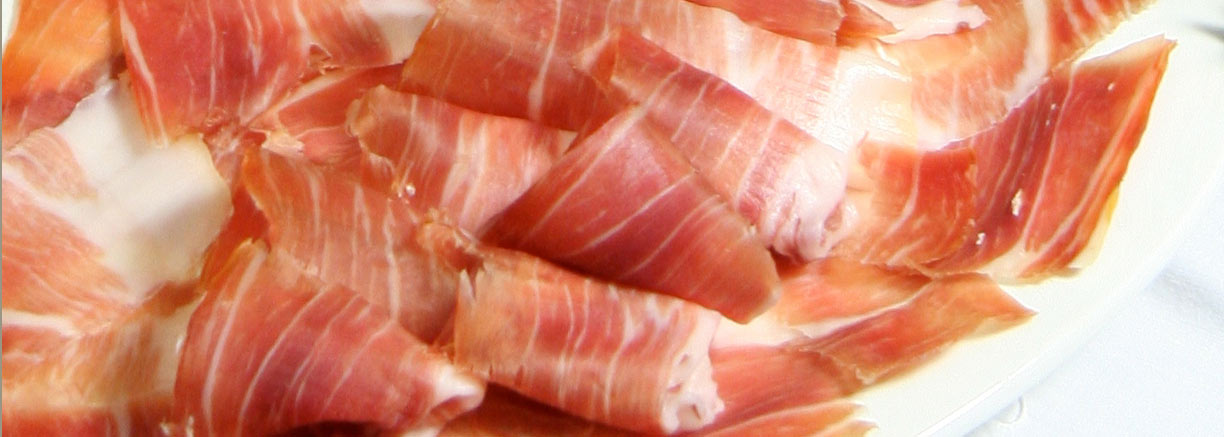
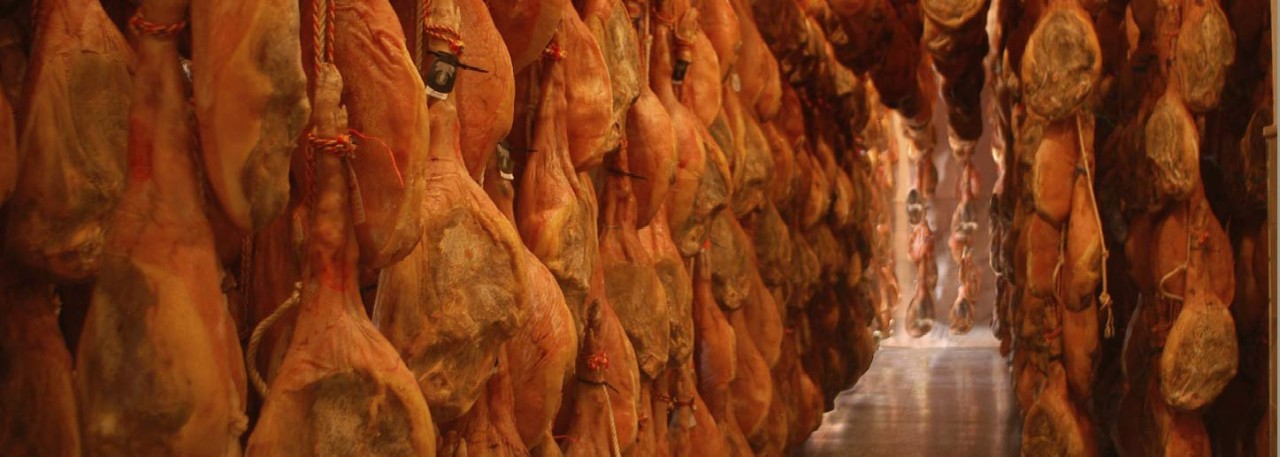
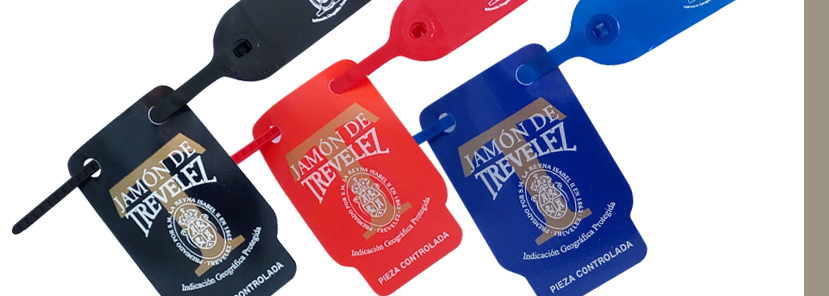
- /content/dam/en/icex-foodswines/images/products/serrano-cured-hams-charcuterie/jamón-de-trevélez-pgi/Jamón%20de%20Trevélez%20PGI%20carr1.jpg
- /content/dam/en/icex-foodswines/images/products/serrano-cured-hams-charcuterie/jamón-de-trevélez-pgi/Jamón%20de%20Trevélez%20PGI%20carr2.jpg
- /content/dam/en/icex-foodswines/images/products/serrano-cured-hams-charcuterie/jamón-de-trevélez-pgi/Jamón%20de%20Trevélez%20PGI%20carr3.jpg
- /content/dam/en/icex-foodswines/images/products/serrano-cured-hams-charcuterie/jamón-de-trevélez-pgi/Jamón%20de%20Trevélez%20PGI%20carr4.jpg
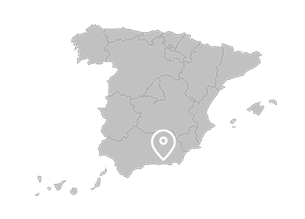
Trevélez (Andalusia)
